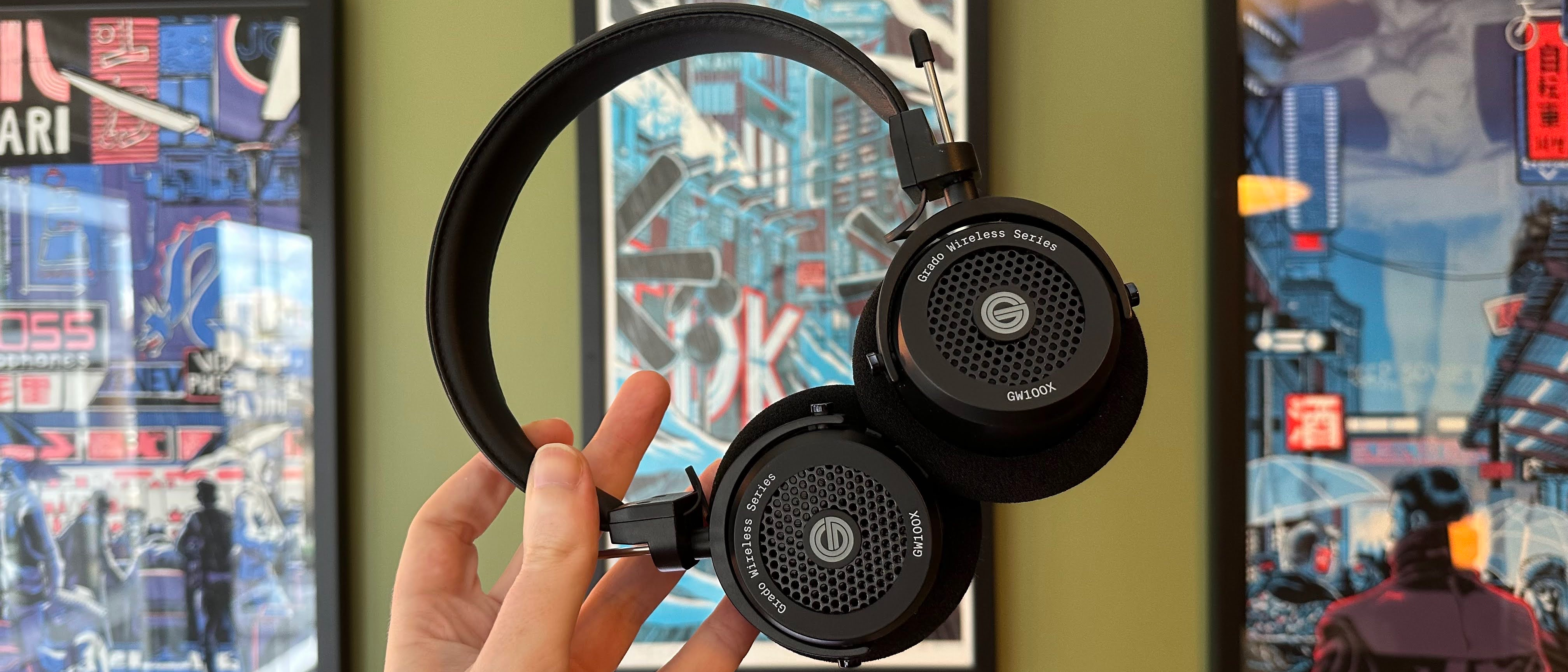iMore Verdict
The Grado GW100x headphones bring a spacious sensuousness to your songs thanks to their open-backed design. But that’s not quite enough to see them keep pace with feature-rich and competitively-priced rivals.
Pros
- +
Wonderful sounding
- +
Long-lasting battery
- +
Lightweight design comfortable for long listening sessions
Cons
- -
Open-backed design causes sound leakage
- -
Materials used feel rudimentary
- -
Lacks features that are now common in this price range
You can always trust iMore.
If you’re in pursuit of the most wondrous sounds your ears can handle, there are lots of things to consider when it comes to headphones. Do you want noise-canceling features to block sounds from the outside world? Do you need lossless audio support for high-definition track playback? What about the age-old wired-vs-wireless debate?
One of the more often overlooked considerations is that of closed-back headphones versus their more rare open-backed counterparts. Allowing air to pass through their earcups, they’re often considered superior-sounding to their close-back rivals, clearer, more natural, and spacious, though include their own drawbacks in terms of sound isolation and leakage.

The Grado GW100x are one such pair of open-backed headphones — and in a rarely-seen wireless Bluetooth 5.2-connecting package, too, with support for SBC, AAC, and aptX Adaptive codecs. They offer a beautifully presented soundstage — as clear and detailed as any studio artist could hope for. But they also command a price tag higher than their feature-lite specs list feels able to justify, especially given that they sit in the same bracket as our pick for the best noise-canceling headphones in 2023.
Grado GW100x: Price and availability
The Grado GW100x are available now, priced at $249 / £249. Though they sound great, it’s a bare-bones package at this price. In the box is just a 3.5mm headphone jack and USB-C charging cable, and the materials used in the construction don’t ooze a premium you’d fairly expect at that price point. What you’re paying for here is pure audio excellence, and that the Grado GW100x does deliver on.
Grado GW100x: What I love
Sound is, of course, the most important consideration of any headphone purchase, and you’ll be hard-pressed to find a more spacious soundstage at this price than what’s offered up by the Grado GW100x. Using Grado’s 4th generation 44mm drivers, designed to dial back distortion, the sense of movement and depth in the imaging is top-tier, with a fantastic sense of presence and dimensionality to the instrumentation. Listening to Roxy Music’s Virginia Plain, it’s easy to pinpoint Brian Eno’s bleeps and bloops behind the harsher guitars and saxophone squeals, with the diegetic motorcycle rev tearing across the stereo stage.
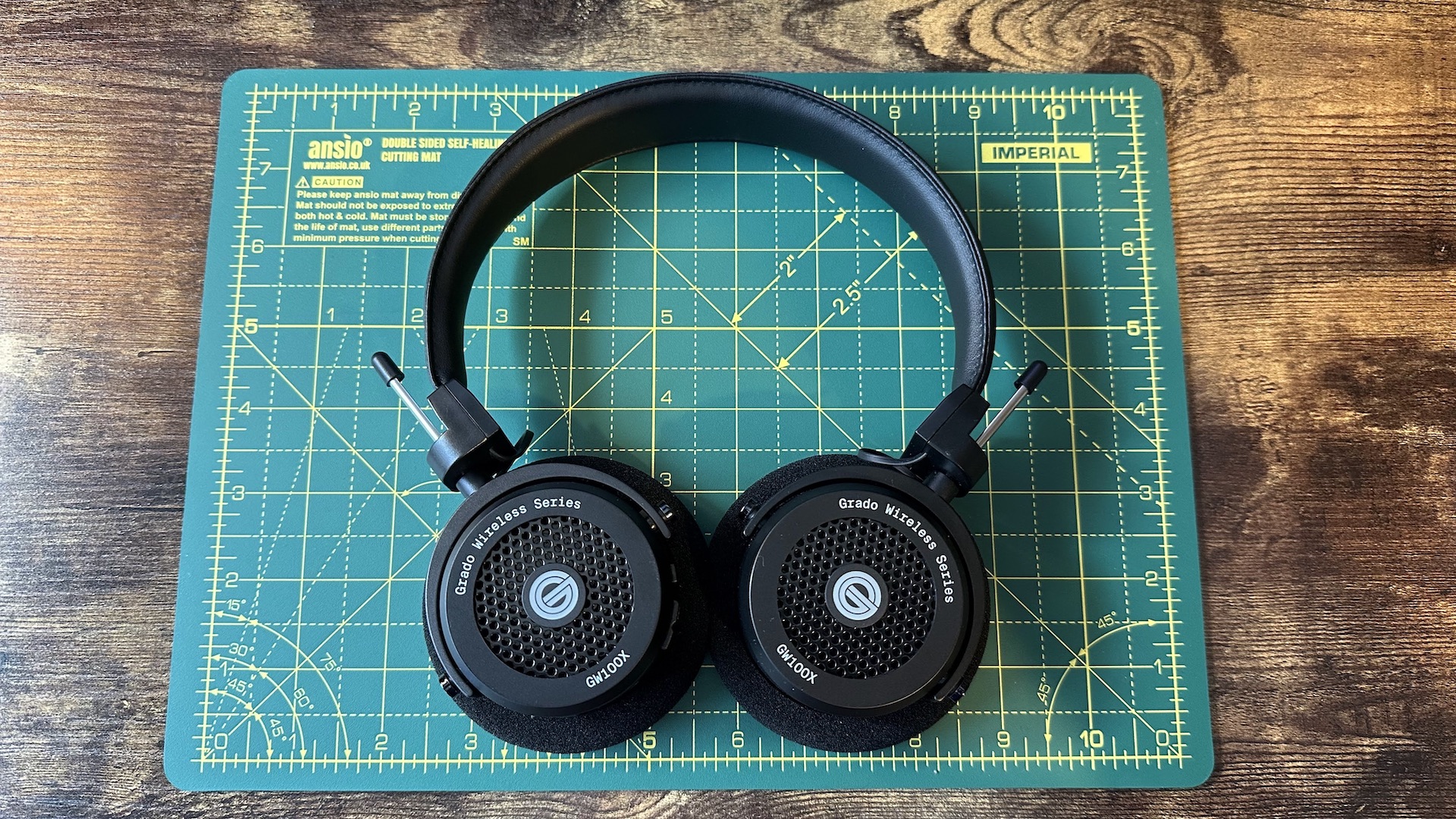
It’s the headphones’ greatest strength, but not the Grado’s only point worthy of praise. While deep low-end bass tends to be an area where open-backed cans can struggle to perform, the GW100x manages very well. James Blake’s Limit to Your Love is a real test of bass performance and overall dynamism, pulsing like a jackhammer between soulful piano lines, and the GW100x holds everything in place with confidence.
But it’s with a detailed mid-range where the GW100x feels best presented, with vocals at the fore and percussive elements really shining. Joni Mitchell’s classic Big Yellow Taxi is given new life, absolutely energetic with bongo’s slapping to the right, the jingle-jangle of Mitchell’s guitar left of stage and triangles tinkling all around. It feels immediate and joyous here, exactly as it should.
Any wireless connection is only going to lead to some degree of compression of course, and the included cable helps to bring even more detail from songs played here.
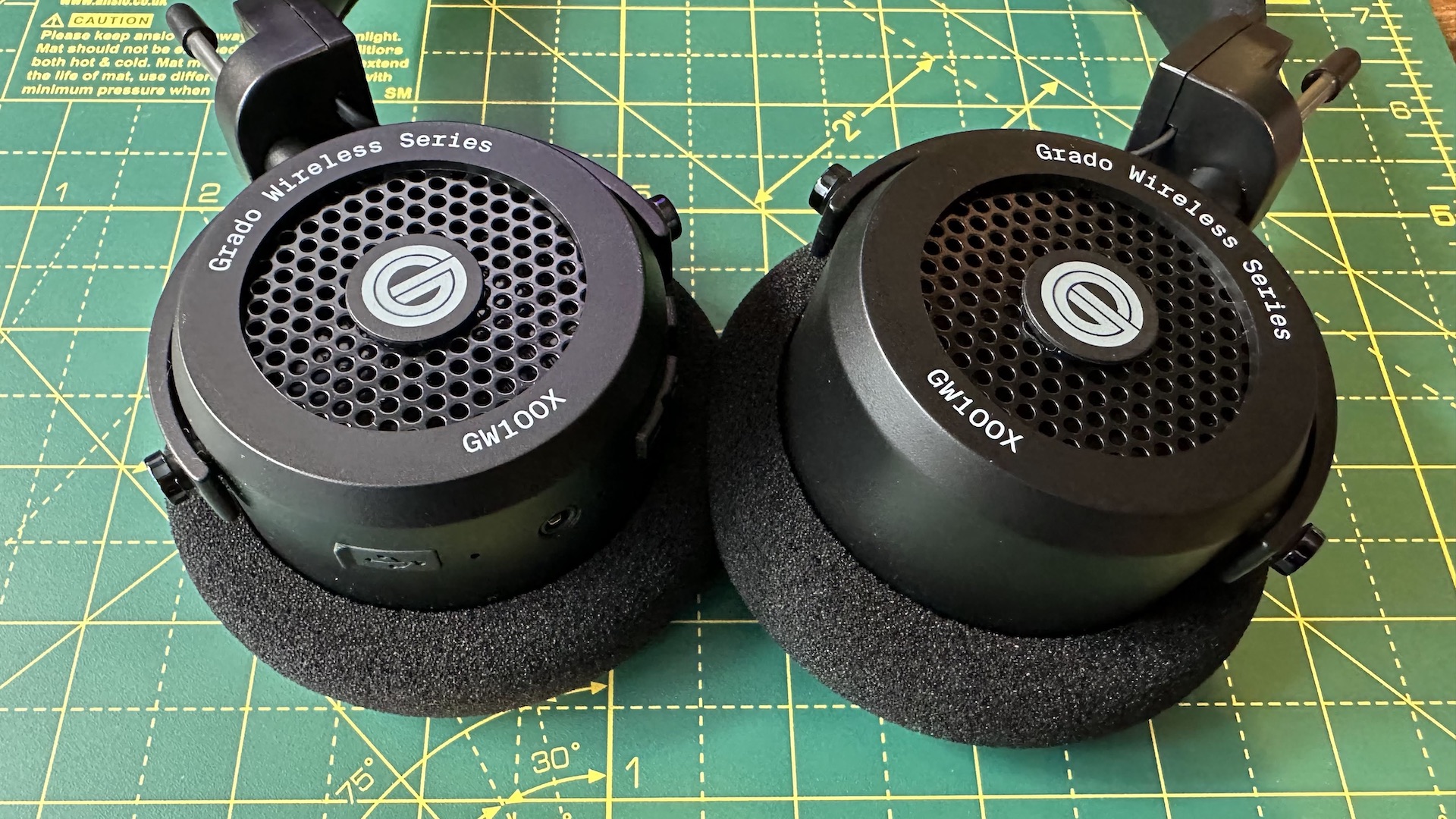
There are also points to praise in the industrial design here too. While it won’t be for everyone, I’m a fan of the retro stylings of the Grado GW100x, with its fit managed by two chrome poles connecting the earcups to the headband — the only splash of ‘color’ on the otherwise black headphones.
You’ll find a little padding in the band and some simple foam over the cups, but the incredibly lightweight (188g) construction and gentle clamp force mean they remain comfortable after many hours of wear. Tactile power/connectivity and volume up and down buttons sit on the left cup, as does the 3.5mm jack connection, and USB-C connection socket (covered with a plastic hood without purpose, given there’s no water or weatherproofing to speak of).

Battery life is remarkable too. Grado quotes a fantastic 46 hours of playback per charge, and that holds up under testing, having only reached for the charging cable once during weeks spent testing them.
Grado GW100x: What I don’t love
It’s easy to gush over how good the Grado GW100x sounds, but once you’ve talked about the great audio, there’s not a lot else to say here — it’s a pretty bare-bones package beyond audio quality, and that’s going to be a hard sell for some given the competition at this price point. There’s no noise-canceling features (admittedly seemingly impossible in an open-backed design, but can’t be ignored in terms of perceived value add), no ‘smart’ features like locational or activity awareness, and not even a case for them in the box. This is all about audio quality — but only about audio quality. If you want more, you’ll need to set your sights elsewhere.
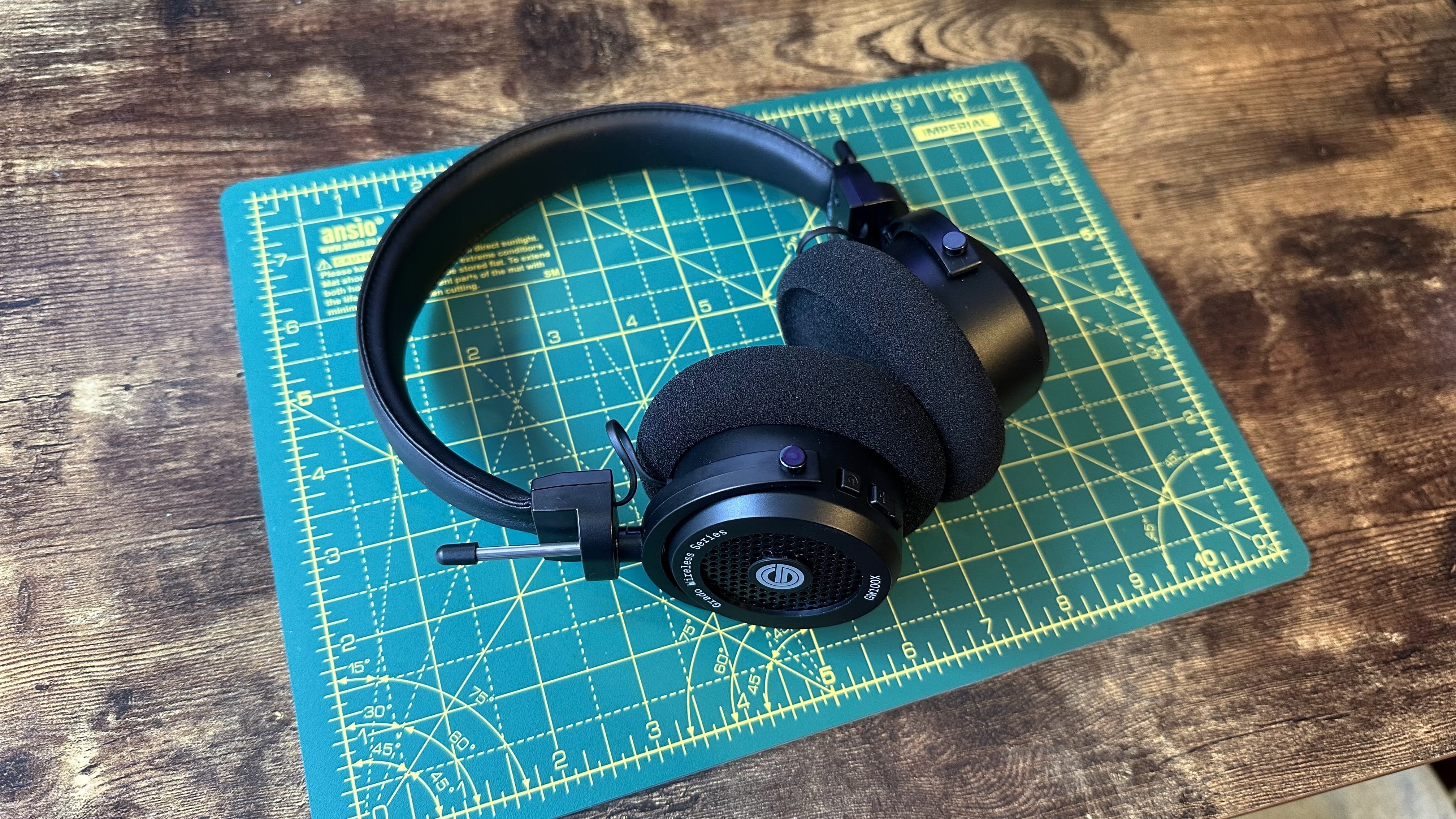
And while I’m glad that the design is so lightweight, the materials used do underwhelm given the price point. I wonder about the lifespan of the flat earpad foam and the strength of the plastic housing the drivers, especially without a protective case.
It’s also worth remembering the inherent drawbacks of open-backed headphones. If you’re using them in a shared space with others nearby, they’re going to be able to hear whatever you’re listening to at anything over a modest volume level. Likewise, you’ll be able to hear ambient sounds invading your listening space, so you’ll get the most out of these if listening somewhere quiet.
Grado GW100x: Competition
There aren’t quite as many options to choose from when it comes to open-backed headphones compared to their closed-back stablemates, but that doesn’t mean you’re bereft of choice. If money is no object, the Sennheiser HD 800 S are about as good as headphones get — period. But you’re also looking at a giant $1,800 price tag, so you can forgive the Grado’s for not competing at that level.
A better match would be the Philips Fidelio X2HR. Open-backed and ready for hi-res file formats, they’re aesthetically similar to the GW100x, but with a more reassuring build and extra padding. They’re a chunk cheaper than the GW100x, but they’re wired too, which hampers their convenience against the Grado option.

But going back to the missing bells and whistles, if you’re happy to eschew the audio benefits of an open-backed design, you’ll be able to get the last-generation Sony over-ears, the Sony WH-1000XM4 on sale at about this price with class-leading noise canceling and smart location and activity-aware features, a great alternative themselves to Apple’s AirPods Max.
Grado GW100x: Should you buy it?
You should buy this if…
- You want to do critical listening at home
- You’ve got high-quality audio files you want to get the best from
- You’ve got a quiet listening space to enjoy them in
You shouldn’t buy this if…
- You mostly listen to headphones in a shared space
- You want to block out external sounds
- You need a charging station that you can travel with

Grado GW100x: Verdict
If scoring the Grado GW100x headphones was solely on the headphones’ audio performance, we’d be talking about full marks here. Detailed, spacious, balanced, and natural-sounding, they deliver the tunes close to how they were envisioned in the studio.
But exemplary battery life aside, the GW100x falls a little short — the materials used feel rudimentary, and features that tend to come as standard at this price point are missing. For in-the-home, considered listening sessions they’ll be fantastic, but if you want the nice-to-have extras that help justify a purchase, you’ll need to look elsewhere.
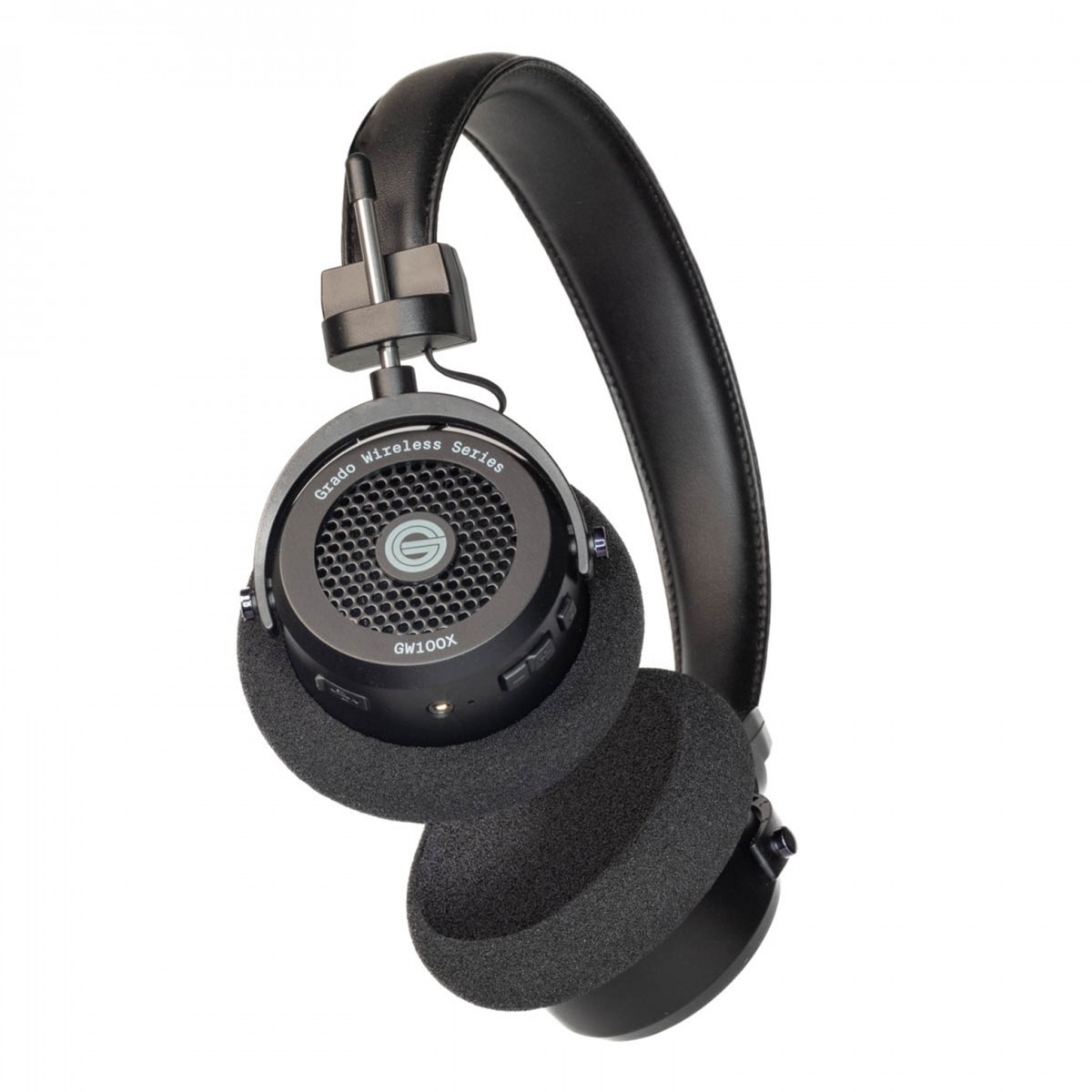
Bottom line: Superb-sounding open-backed headphones that are just a little too light on features.

Gerald Lynch is the Editor-in-Chief of iMore, keeping careful watch over the site's editorial output and commercial campaigns, ensuring iMore delivers the in-depth, accurate and timely Apple content its readership deservedly expects. You'll never see him without his iPad Pro, and he loves gaming sessions with his buddies via Apple Arcade on his iPhone 15 Pro, but don't expect him to play with you at home unless your Apple TV is hooked up to a 4K HDR screen and a 7.1 surround system.
Living in London in the UK, Gerald was previously Editor of Gizmodo UK, and Executive Editor of TechRadar, and has covered international trade shows including Apple's WWDC, MWC, CES and IFA. If it has an acronym and an app, he's probably been there, on the front lines reporting on the latest tech innovations. Gerald is also a contributing tech pundit for BBC Radio and has written for various other publications, including T3 magazine, GamesRadar, Space.com, Real Homes, MacFormat, music bible DIY, Tech Digest, TopTenReviews, Mirror.co.uk, Brandish, Kotaku, Shiny Shiny and Lifehacker. Gerald is also the author of 'Get Technology: Upgrade Your Future', published by Aurum Press, and also holds a Guinness world record on Tetris. For real.
